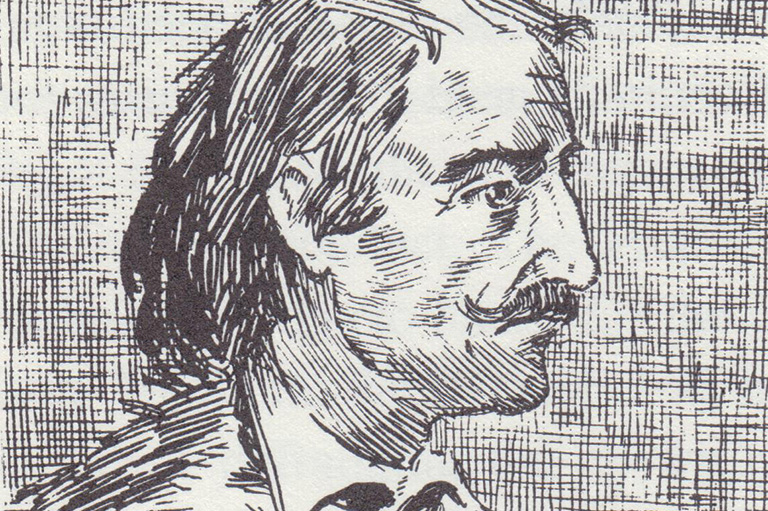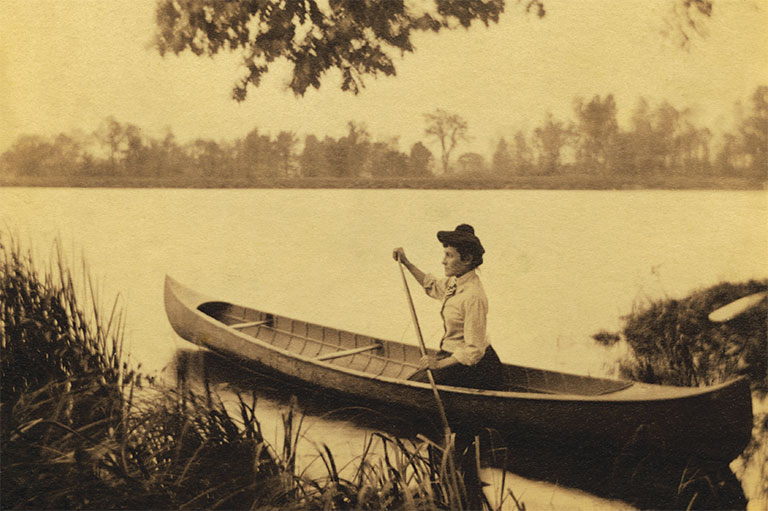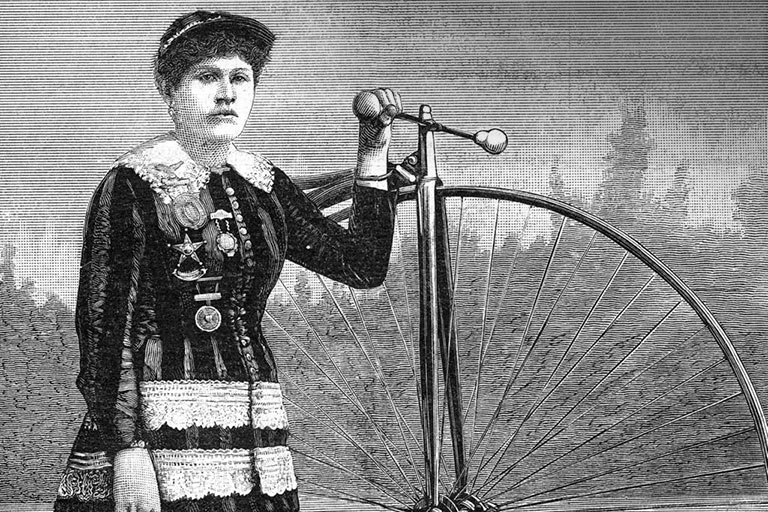Sport and reconciliation
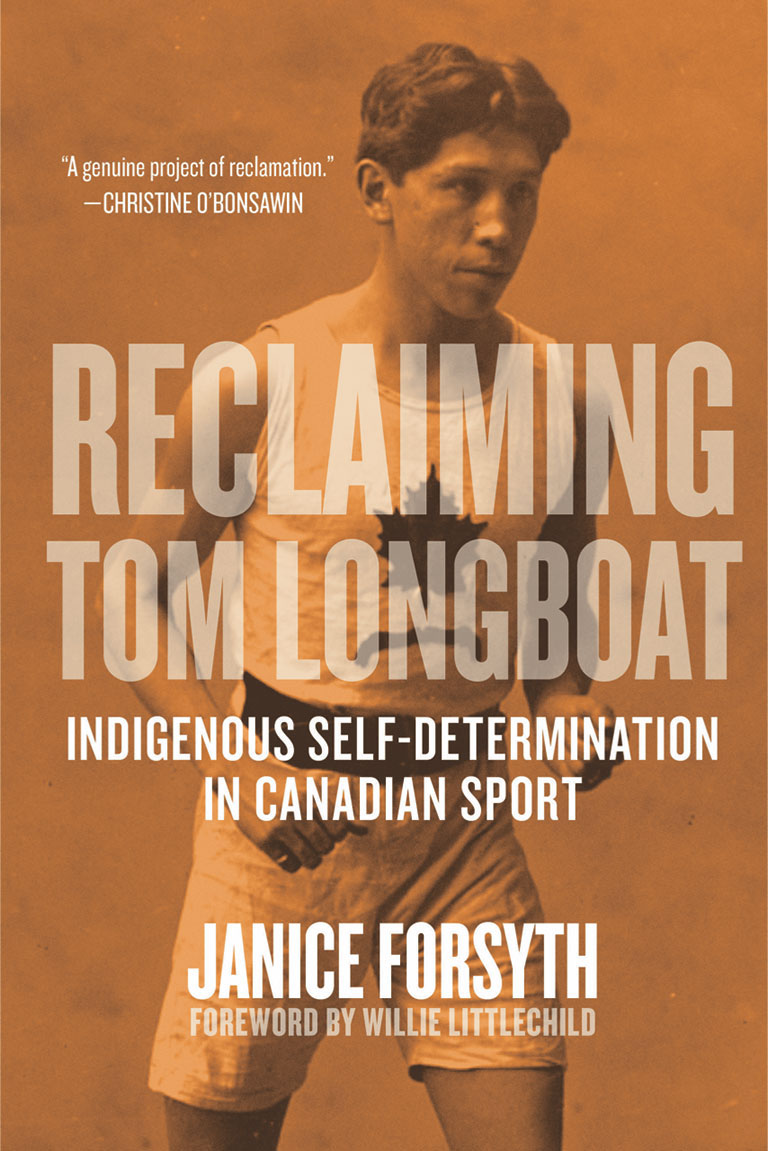
Tom Longboat was a celebrated long-distance runner from Six Nations of the Grand River in Ontario. In the early twentieth century, when foot races were extremely popular, Longboat set numerous world records, won major races in North America and Europe, and competed for Canada at the 1908 Olympic Games. The Onondaga athlete, who served as a distance runner during the First World War, has been recognized in Ontario with a day in his honour and across Canada with awards given in his name since 1951.
Yet, as Janice Forsyth notes in Reclaiming Tom Longboat: Indigenous Self-determination in Canadian Sport, media portrayals of Longboat varied between admiration and disdain, with many reports based upon racialized stereotypes. Forsyth — herself the winner of a Tom Longboat Award — draws on research showing that Longboat was derided by some because “he made his own decisions about training, racing, and the conduct of his life” and thereby countered expectations of an Indigenous athlete.
Forsyth’s book is not so much about rehabilitating Longboat’s own reputation as it is about charting the history of the awards given in his name and the effects they have had for their recipients and other Indigenous people. She writes that many recipients “incorporated, resisted, challenged, or subverted the official meanings produced by government and sports officials, thereby making the awards their own.” In her efforts to help to reclaim the meanings of sport for Indigenous peoples as part of the ongoing work of reconciliation, Forsyth looks back to the use of sports and games at residential schools.
Schooling bodies
by Janice Forsyth
The most aggressive attempt to Christianize and civilize Indigenous people occurred through the Indian residential school system. In his detailed study of residential schools in Canada, J.R. Miller discusses the difference between education and schooling, noting how the two concepts are often mistaken as one and the same. According to Miller, education is a process that all cultures of the world possess, but not all cultures engage in schooling to educate their young. The difference between these two practices is more than a matter of degree; it has to do with practices fundamental to creating and maintaining cultural stability.
Before Europeans settled in North America, Indigenous people received their education by learning how to survive on the land, and physical games and contests were central to this training. For example, the Dene and Athapaskan participated in a variety of games to develop strength, speed, flexibility, and endurance. Both men and women joined in activities that emphasized the gendered nature of their roles, which entailed different strenuous tasks. As one fur trader noted at Fort Resolution around 1800, “it is true the men have to undergo the fatigue of the chase, but still the women must carry the meat home.” The Inuit, whose traditional territory spans the most northerly reaches of the continent, competed in events — such as the knuckle hop, mouth pull, and ear lift — that developed the same skills as the Dene but with an emphasis on pain tolerance. This was meant to prepare them mentally and physically for the harsh realities of life on the land in an extreme climate.
Traditional sports and games were also key sites for reinforcing social, political, economic, and spiritual aspects of life. For the Haudenosaunee, whose home extended along both sides of the St. Lawrence River and Lake Ontario, lacrosse was a means by which to cement social ties, physically prepare men for war, engage in economic relations, connect with the spiritual world, and have fun. Although some activities, such as lacrosse, were connected to religious traditions, others, such as the Inuit ear lift, were not. Yet all physical activities were crucial for maintaining their practitioners’ unique cultural identities and connection to the land while ensuring basic survival.
Changes came with the formal establishment of the Indian residential school system in the late nineteenth century. ...
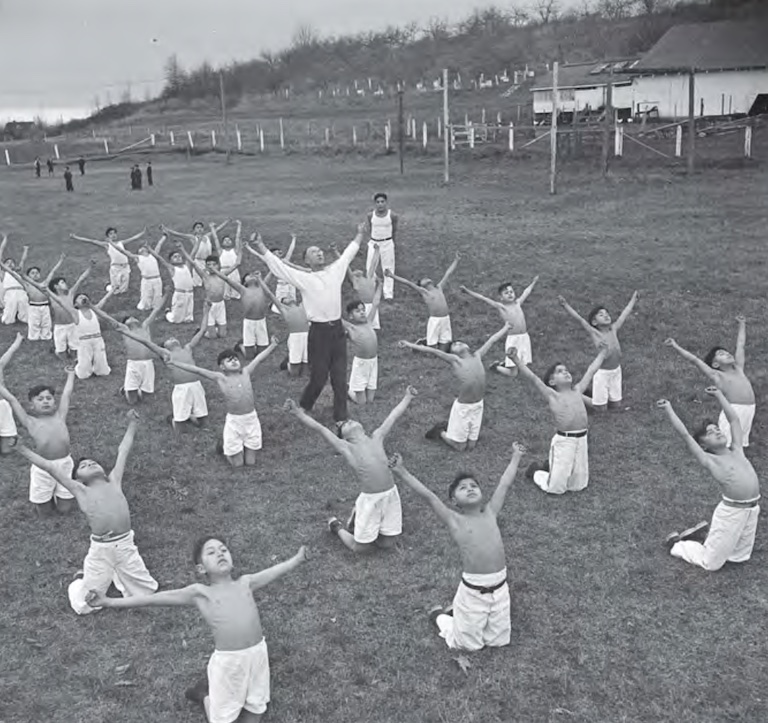
In 1860, responsibility for Indigenous-settler relations was transferred from the British Crown to the Province of Canada, and a new bureau focusing on Indian administration was established. In 1867, the new federal government, under the Department of Secretary of State, was given legislative responsibility for managing its relationship with Indigenous nations. Soon, an administrative team was charged with creating a national policy on Indigenous education, and it drew on the services of the Roman Catholic, Anglican, Methodist, and Presbyterian Churches to implement its program. It was in this fashion that the two major institutions in Canada — the church and the state — came to dominate Indigenous life, pooling their human and financial resources to Christianize and civilize Indigenous children. For more than a hundred and fifteen years, beginning in 1880, when the Department of Indian Affairs was established and drafted the first policy on Indigenous education, to 1996, when the last government-run residential school closed its doors, more than 150,000 Indigenous youth received their education away from home and off the land.
For the schooling to be effective, it had to be a lived experience. Euro-Canadian sports and games were integral to the department’s program of assimilation, a reality well understood by Indigenous people today. The 1996 Report of the Royal Commission on Aboriginal Peoples notes how the department used popular Euro-Canadian sports and games to help to bring about fundamental changes in the values and behaviours of Indigenous students. It was thought that participation in Euro-Canadian activities would contribute to the breakdown of communal values by fostering a competitive spirit among pupils and that, hopefully, through regulated instruction, the skills they learned would translate into a desire for individual achievement and wealth. ...
Generally speaking, in Canada, federal priorities for Indigenous education shaped the sport and recreation activities offered at government-run schools. Two broad phases, differentiated by amendments made in 1951 to the Indian Act, characterized the federal approach to Indigenous education. The policy approach taken during each phase shaped the sport and recreation opportunities available at residential schools — from which many of the Tom Longboat Award winners came — especially between 1951 and 1972, the first administrative era of the awards. As federal policy on Indigenous education shifted, so did its emphasis on sports and games.
In the pre-1951 era, the primary responsibility for schooling of Indigenous youth fell to the churches. Left largely to their own devices, religious officials implemented curricula geared to their own practical and moral objectives. Financial support was provided by the federal government through a grant based upon the number of students enrolled in each school. The more students identified on the registry, the greater the amount of funding from Indian Affairs. The per capita grant system might have been a financially prudent decision in the eyes of bureaucrats in Ottawa, but in practice it led to fierce denominational rivalry among the different sects competing for students. This rivalry, combined with the lack of a standard curriculum and the means to enforce it, meant that residential schools throughout this period were chronically underfunded, almost always in disrepair, poorly staffed, and lacking in qualified teachers.
Federal officials believed that athletic contests would help to faciliate integration, and they encouraged team sports
During this era, physical-activity programs were linked directly to biological health, in addition to concerns about assimilation. From the late 1800s to the late 1940s, waves of communicable diseases circulated through the schools, wreaking havoc on the bodies of Indigenous pupils, who were generally overworked, underfed, and emotionally exhausted, leaving them vulnerable to viruses and infections. This vulnerability was exacerbated by the terrible living conditions inside the schools, which had overcrowded rooms and poor air circulation. ... The introduction of physical activities was thus an efficient and cost-effective way to deal with the recurrent health issues in the schools.
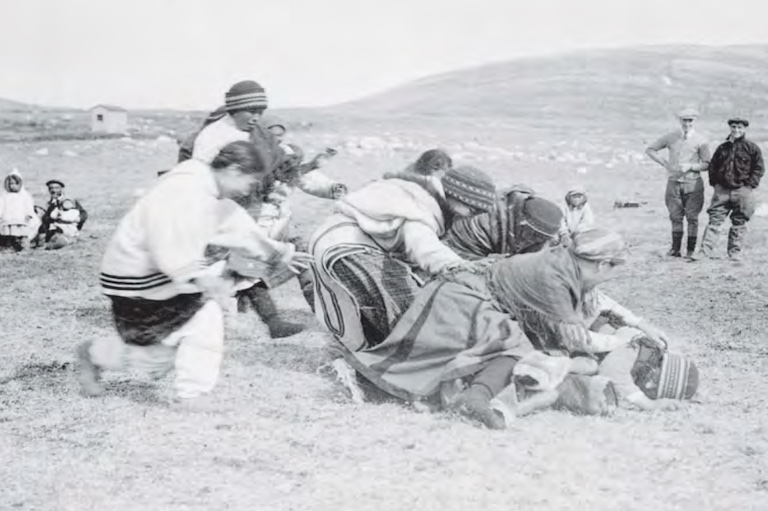
Initially, calisthenic programs were used widely as part of the health curriculum. The Department of Indian Affairs introduced these exercises in 1910 in an effort to reduce the spread of pulmonary diseases among Indigenous pupils. These exercises could be performed indoors when the weather was poor because they required relatively little space and no equipment, but instructors were encouraged to move outdoors whenever possible to capitalize on the fresh air. Indigenous bodies, once a symbol of strength and virility, were repositioned within the growing discourse on physical education as weak and diseased, justifying the need for proper and orderly instruction on how to regain vitality.
The introduction of calisthenic programs coincided with the use of military drills, also a common feature of the public school system because of funding through the Strathcona Trust. The link between military training and nationalism was unmistakable, since the drills were designed to replace tribal allegiance with a sense of patriotic duty. ...
Popular recreational activities, such as baseball, basketball, hockey, and lacrosse, rounded out the regimen and provided students with some respite from the monotony of everyday life. These opportunities were few and far between and available mainly to boys. For the most part, students played among themselves, though from time to time activities were organized with students from nearby residential schools or, less frequently, with non-Indigenous students from nearby towns and cities. ... They were not a right but a reward for “good” behaviour. Pupils who disobeyed the rules or who fell into disfavour with instructors could have their recreational privileges taken away. ...
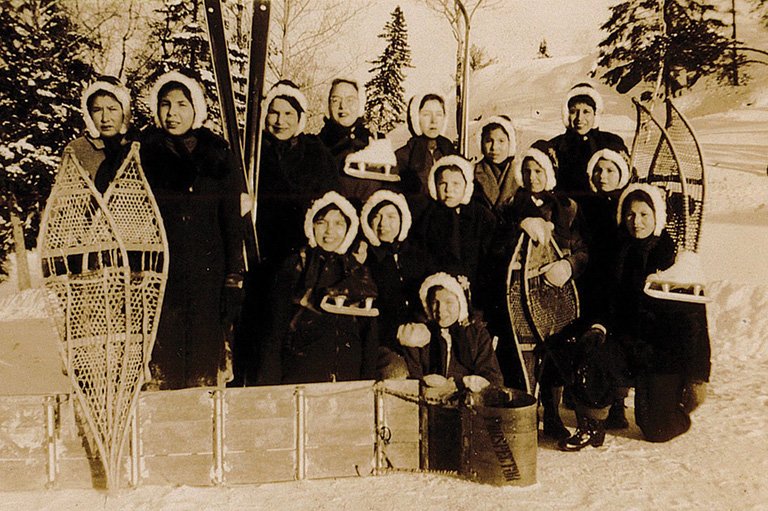
A poignant example of how “regulated desire” functioned in one residential school, as well as student responses to what was offered, is found in Basil Johnston’s semi-autobiographical novel Indian School Days. Johnston recalls his youth at the Spanish Indian Residential School (later renamed Garnier), an all-male institution in northern Ontario. He describes how, in the late 1940s and early 1950s, the students were divided into four groups named after professional hockey teams — the Montreal Canadiens, the Toronto Maple Leafs, the New York Rangers, and the Chicago Black Hawks — and competed against each other in loosely organized events. The primary objective was to foster a competitive spirit among the students in the discharge of their regular chores. If one member failed to live up to the expectations of the Jesuit instructors, then the entire team suffered for his negligence; the team that finished first was usually given a bit of free time. Interscholastic competition served a more dubious purpose at Spanish, since it was meant to exhaust the students, thus ensuring that any remaining energy would be spent on the playing fields rather than in an attempt to run away. ...
The post-1951 era saw a shift in the balance of power between church and state, with Indian Affairs taking on more responsibility for government-run residential schools. ... Athletic competitions became a more pronounced feature of residential schools during this era, as federal officials believed that athletic contests would help to facilitate integration, and they encouraged school staff to promote participation, especially in team sports. The in-house league at Spanish that Johnston describes in Indian School Days was expanded in the 1950s to include competitions against local white teams in a range of sports, including softball, baseball, touch football, boxing, basketball, and hockey. ...
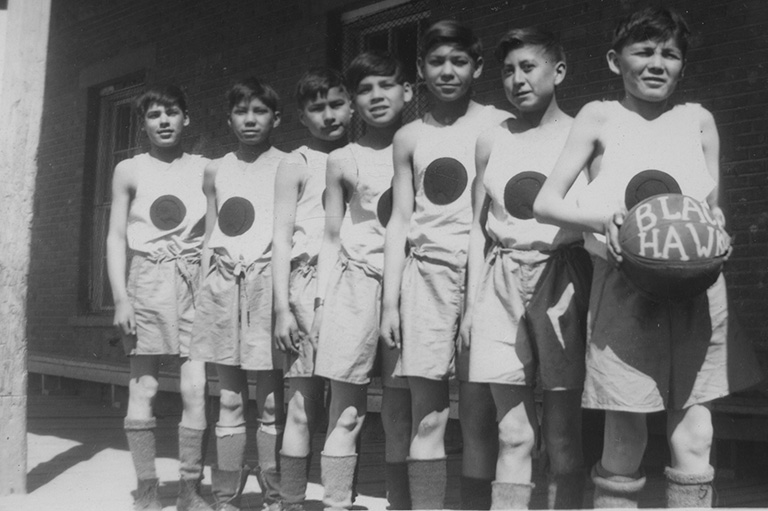
With the development of a competitive ethos in the school system, winning took on an increased significance as athletic competitions became the arena in which ideas about race, ethnicity, class, and gender were contested on a regular basis. Students as well as their instructors placed a high premium on successful teams and athletes, especially when competing in explicitly racialized contests of “Indians” versus “whites.” For many Indigenous youth, athletic competitions were also one of the few areas of life in which they could derive some pleasure and foster a sense of pride. Sometimes the contests were one-sided affairs. Male athletes at Spanish, for example, repeatedly had their clothes and bodies “patched up” and sent back onto the playing field to finish matches against older and stronger white teams.
In Indian School Days, Johnston recalls one particularly memorable game of touch football played against a group of senior high school students from the nearby town of Espanola, Ontario. His remembrance not only highlights the importance of winning but also suggests the heightened sense of masculinity and racial identification that students might have felt in a competitive atmosphere: “If we were expected to risk cuts, gashes, lacerations, bruises, welts and maybe even broken bones while clinging to Jack Major or oversized backs, we preferred to maintain some style and respectability while doing so.” If Johnston and his teammates could not win against the white teams, then losing with their dignity intact was the next best thing.
Themes associated with this article
Advertisement
You might also like...

Our online store carries a variety of popular gifts for the history lover or Canadiana enthusiast in your life, including silk ties, dress socks, warm mitts and more!


